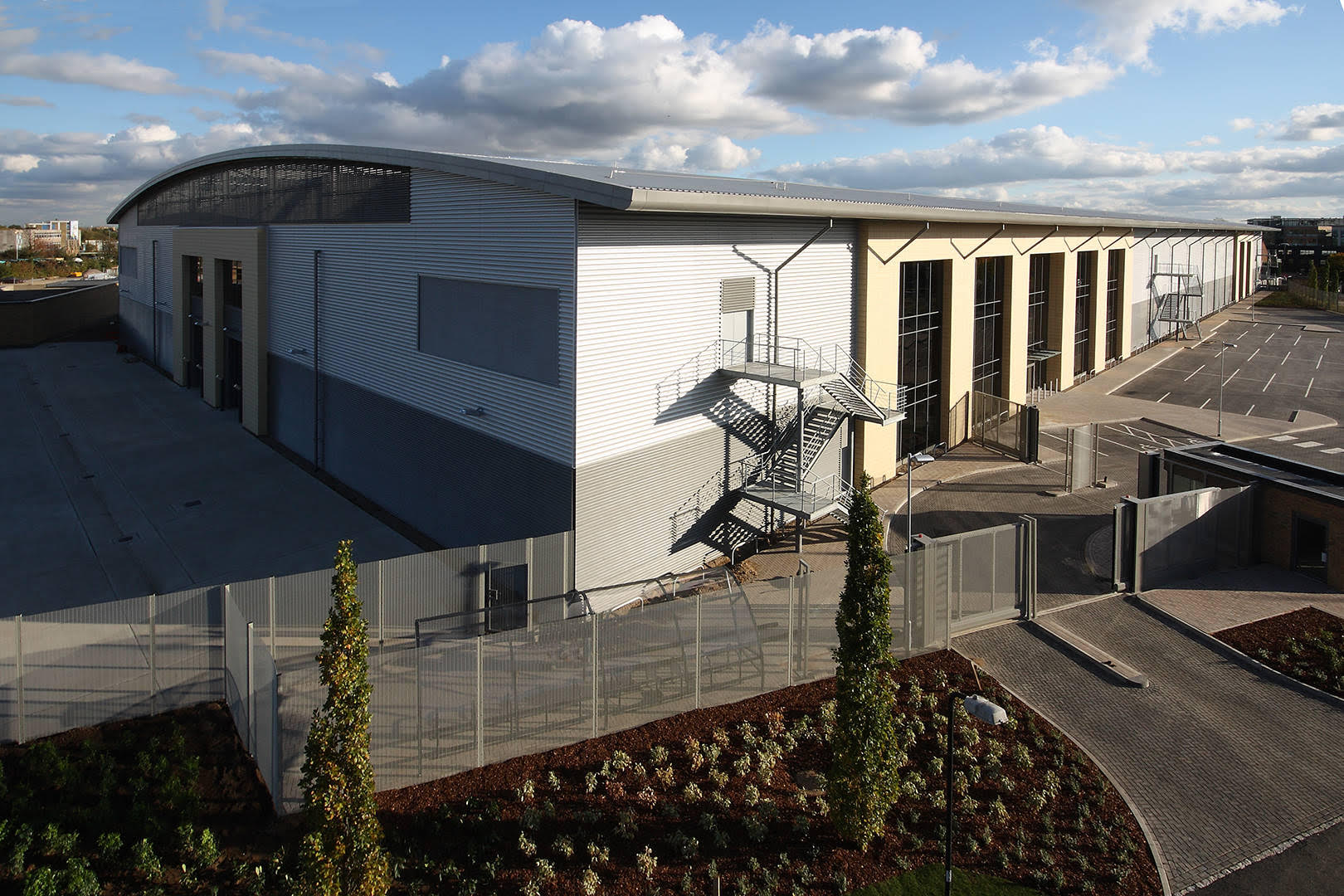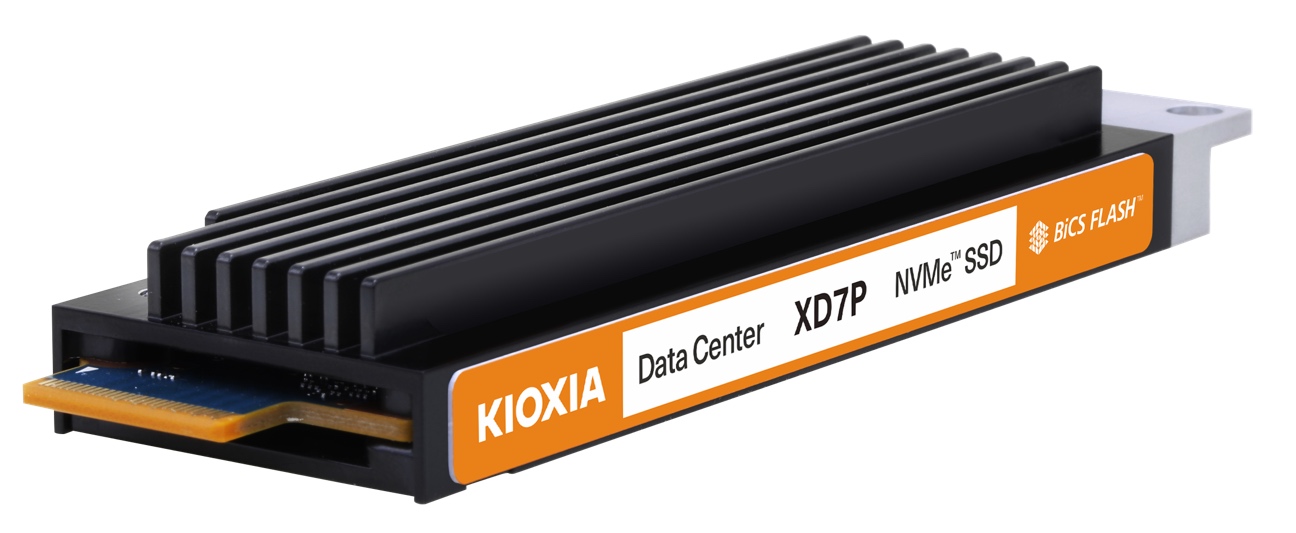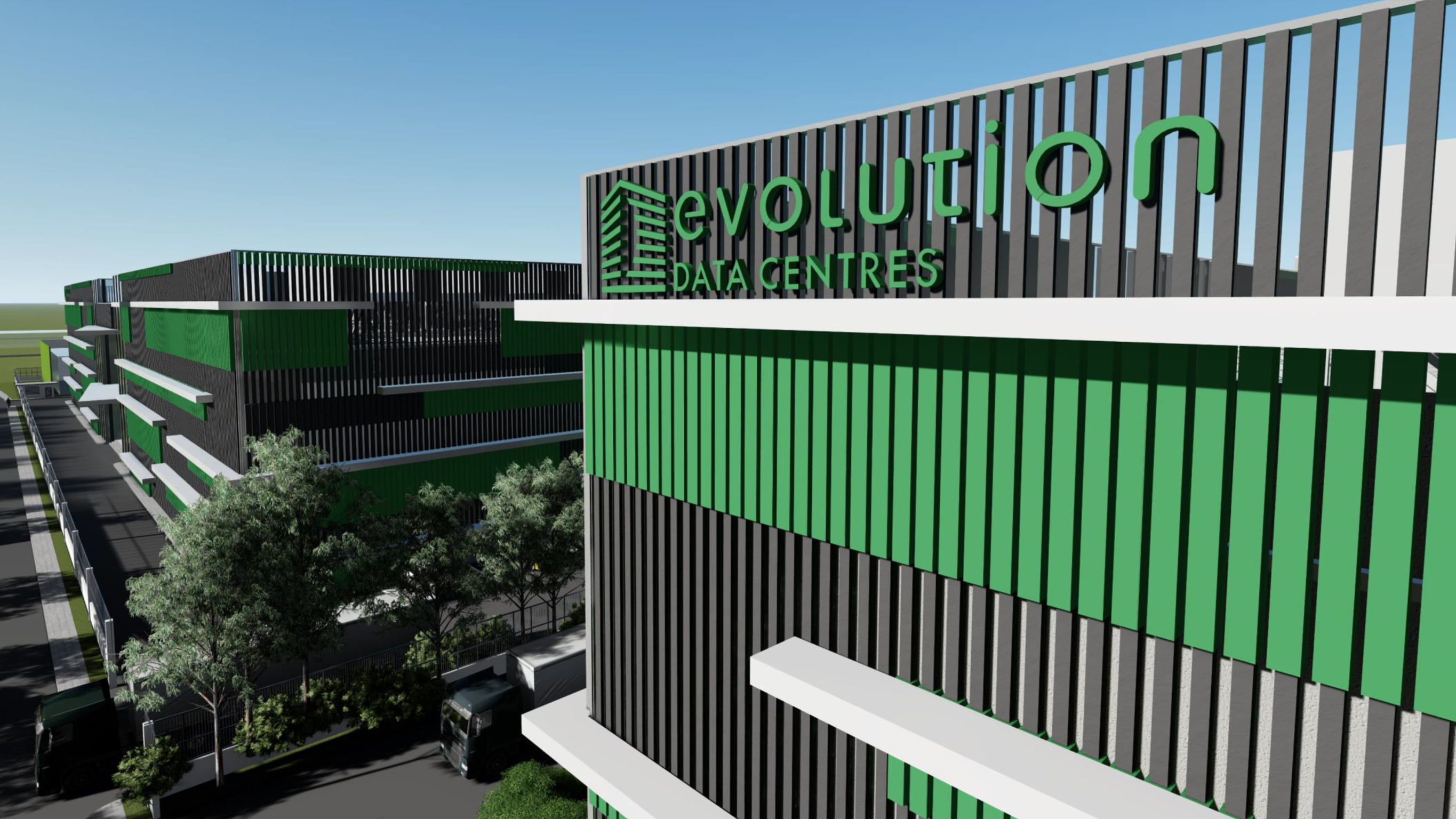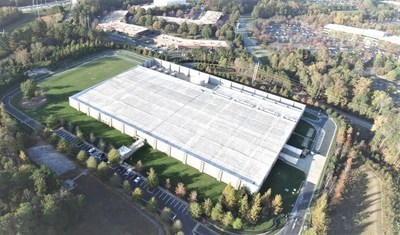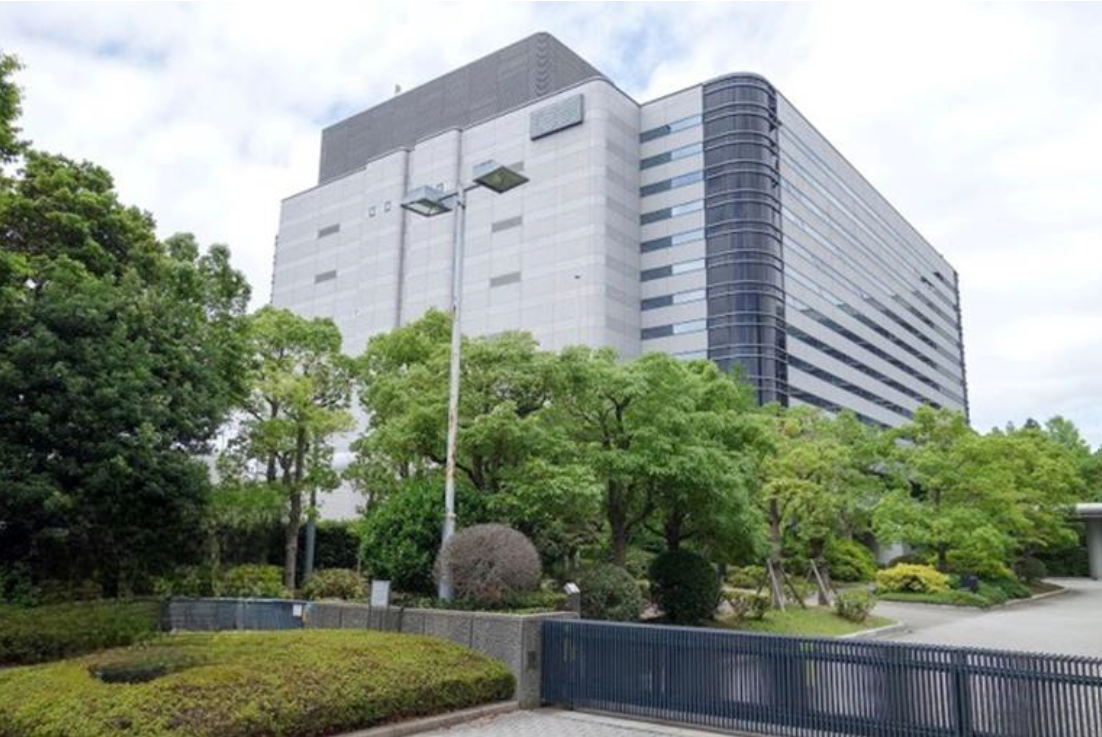Hyperscale Data Centres: Scale, Speed & Strategy
Data Centres
Hyperscale Data Centres: Scale, Speed & Strategy
Kao Data appoints Gratte Brothers to support data centre expansion
Kao Data has announced that it has appointed Gratte Brothers as principal contractor for the expansion of its KLON-06 data centre in Slough.
The project will see Gratte Brothers build out the IT capacity at KLON-06 to support the expansion of Kao Data’s platform - providing customers in West London with an optimised, sustainable and OCP-Ready facility.
The build at KLON-06 will adhere to Kao Data’s high performance blueprint, providing a hyperscale inspired facility that’s placed to support enterprise and large-scale cloud deployments across the West London availability zone. From a sustainability and efficiency standpoint, the facility will include an efficient cooling system, lithium-ion UPS, and be powered by 100% renewable energy. Furthermore, all generators will be powered by hydrotreated vegetable oil (HVO), removing 90% of net CO2 emissions.
Iain Thomson, Managing Director, Gratte Brothers says: “We are delighted to be partnering with Kao to deliver the technical expertise required to bring this facility to life. KLON-06 provides a perfect opportunity for Gratte Brothers to showcase its commitment to engineering efficient and sustainable solutions, and we look forward to working collaboratively with the team to deliver this project.”
“Our partnership with Gratte Brothers demonstrates Kao Data’s commitment to technical excellence in data centre design, build and operations, and will help fast-track the development of KLON-06 in line with customer demands,” says Paul Finch, COO, Kao Data. “Slough is one of the UK’s most important data centre communities, and the expansion of our portfolio within the world’s second largest data centre hub illustrates our dedication to scaling our high performance platform and supporting customers with sustainable, digital infrastructure solutions.”
Beatrice - 21 October 2022
Data Centres
Hyperscale Data Centres: Scale, Speed & Strategy
News
KIOXIA announces EDSFF E1.S SSDs for hyperscale data centres
KIOXIA has announced that it has expanded its portfolio with the addition of the KIOXIA XD7P Series data centre NVMe SSDs. Designed for hyperscale and general server applications in the new Enterprise and Data Centre Standard Form Factor (EDSFF), XD7P drives are the second generation of KIOXIA’s E1.S SSDs with Open Compute Project (OCP) data centre NVMe SSD support, following its KIOXIA XD6 Series.
“Hyperscale needs of density, power, performance and serviceability are driving PCIe 5.0 E1.S as a form factor, and the OCP data centre NVMe SSD specification V2.0 for the data centre,” says Ross Stenfort, hardware storage engineer, Meta. “The KIOXIA XD7P Series SSD supports these storage technologies, to enable the next generation of hyperscale needs.”
XD7P Series data centre NVMe SSDs deliver overall improved performance, achieving nearly one to two times the sequential write performance when compared to their predecessors. These drives are designed to PCIe 4.0 and NVMe 2.0 specification, and PCIe 5.0 with maximum interface speed of 32GT/s per lane is under development. Hence, XD7P will be released initially as PCIe 4.0 SSDs. PCIe 5.0 SSDs will be released based on customer demand.
Based on KIOXIA’s fifth generation BiCS FLASH 3D flash memory technology, the XD7P Series utilises a proprietary KIOXIA controller, which can be adapted to customer needs. The E1.S form factor will be available in heights of 9.5mm, 15mm and 25mm with heat sink options. Capacities will be available up to 7.68TB with 1DWPD endurance.
“Next generation cloud and edge platforms need to tackle the challenges arising from thermal and signal integrity requirements,” says Frederik Haak, Senior Manager SSD Marketing, KIOXIA Europe. “With the XD7P Series, KIOXIA’s new generation of E1.S form factored data centre PCIe and NVMe SSD offers an excellent choice for cloud and system architects with focus on future proof platform design.”
Beatrice - 20 October 2022
Data Centre Operations: Optimising Infrastructure for Performance and Reliability
Data Centres
Enterprise Network Infrastructure: Design, Performance & Security
Hyperscale Data Centres: Scale, Speed & Strategy
News in Cloud Computing & Data Storage
Evolution partners with Warburg Pincus to develop sustainable data centres
Evolution Data Centres (EDC) has entered into a programmatic joint venture with affiliates of Warburg Pincus (WP) for the development of sustainable hyper-scale data centres in the fast-growing cloud markets within Southeast Asia. As part of the venture, WP will be committing capital from its maiden asset-level Asia real estate fund, which successfully closed with committed capital of $2.8 billion in late 2021.
EDC was founded by a team of executives with over 25 years of experience in the Asian Data Centre market and an extensive track record, having deployed more than 640MW of capacity and led more than $1bn of digital infrastructure transactions in the region. Evolution was established to address two key challenges: the lack of quality and scale of data centre capacity in emerging Asian markets, and the critical need for sustainable infrastructure in the region.
Darren Webb, Co-Founder and Chief Executive Officer of EDC says, “I am delighted to announce our new partnership with Warburg Pincus. It is great to have the backing of such a credible investor who shares our passion for building and operating hyper-scale, sustainable data centres across multiple high-growth markets in Southeast Asia. This funding will help us realise our vision of being the leading sustainable data centre provider in the region.”
“Warburg Pincus has an outstanding track record of investing in Asia real estate and digital infrastructure. We look forward to drawing on their wealth of experience in undertaking large-scale capital expenditure programs in the region as we embark on our next stage of growth.” comments Ed Martin-Sperry, Co-Founder and Chief Investment Officer of EDC.
www.evolutiondatacentres.com
www.warburgpincus.com
Beatrice - 26 September 2022
Data Centres
Hyperscale Data Centres: Scale, Speed & Strategy
News
STACK Infrastructure and ESR partner
STACK Infrastructure and ESR have announced a joint venture to develop a 48MW data centre site in Incheon, Korea.
STACK and ESR will jointly develop and deliver a 48MW facility in Incheon in Seoul’s western suburbs. Power to the facility has been secured from KEPCO and construction of the single building will commence in Q1 2023 for delivery of ready for service capacity in Q4 2024. The facility will be operated under the STACK brand.
The development is strategically located with robust access to power and network, offering scalability and reliability for higher rack densities and floor loading specifications. The partners will develop a facility incorporating the latest environmentally friendly design supporting industry-leading PUE and building standards. This data centre will enable hyperscalers and enterprise clients to address their evolving requirements in Korea and the APAC region more broadly.
“STACK’s opening of a fifth APAC market in 12 months, expanding on our recent developments in Melbourne, Canberra, Perth and Tokyo, enhances our focus on our customers’ strategic requirements by establishing a scalable presence in existing and emerging tier one data centre markets,” says Pithambar (Preet) Gona, STACK’s Chief Executive Officer - APAC. “We are excited about our partnership with ESR, which illustrates our ability to work with market leading real asset managers, leveraging our combined expertise to the benefit of our customers”.
“ESR’s strong regional capability and experience in tier one data centre markets ensures we are well-positioned to help develop facilities across critical hyperscale locations,” says Diarmid Massey, CEO of ESR Data Centres. “Partnering with STACK enables us to leverage an outstanding global operating platform and innovative capital solutions to target hyperscale customer growth in key markets.”
This milestone follows the recent announcements of STACK’s entrance to the APAC market with the opening of its Singapore regional headquarters, its first 36MW campus in Inzai, Japan and expansion into the Australia market with 124MW in Melbourne, Canberra, and Perth.
The strategic nature of ESR’s partnership with STACK and ESR’s previously announced data centre land acquisitions in Japan and Hong Kong, as well as the recent first closing of ESR DC Fund 1, a maiden fund with over $1 billion of equity commitments, continue to demonstrate ESR’s commitment to new economy investment and the development of a range of environmentally friendly and industry leading data centre solutions regionally.
www.stackinfra.com
www.esr.com
Beatrice - 12 September 2022
Data Centres
Hyperscale Data Centres: Scale, Speed & Strategy
News
DataVita makes senior appointment to lead international push
DataVita has appointed James King as its new Business Development Director to lead its ambitions for international growth.
A chartered accountant with a background in corporate and project finance, James joins from the Scottish Futures Trust where he was an associate director. He previously held roles at accountancy giants EY and PwC.
While at the Scottish Futures Trust, James established the Host in Scotland initiative, which aims to raise the profile of Scotland as a location for data centre facilities on the world stage.
James’s experience working with global partners in the data centre and subsea infrastructure sectors will see him lead DataVita’s plans to build on its domestic success by attracting companies with international data centre requirements to Scotland.
Danny Quinn, Managing Director at DataVita, says: “Scotland has great potential to follow the likes of Ireland and Sweden an become part of the international data centre market, encouraging multinational companies and hyperscalers to base their regional European data centre services here. We see James as a key contributor to our plans on this front with his experience at Host in Scotland, building on the expertise within our current team.”
James adds: “Having worked alongside Danny Quinn and his team for many years, I have been able to see first-hand how dedicated DataVita is to its clients and providing a first-class service with a very keen focus on sustainability. The company’s Fortis data centre facility is unrivalled in Scotland - and arguably the rest of the UK - in terms of its green and security credentials and I am really excited to build on its success to date.”
www.datavita.com
www.hostinscotland.com
Beatrice - 5 September 2022
Commercial Real Estate: Property Developments, Trends & Infrastructure
Data Centres
Hyperscale Data Centres: Scale, Speed & Strategy
Insights into Data Centre Investment & Market Growth
News
Lincoln Rackhouse and Principle Real Estate Investors acquire Atlanta data centre
Lincoln Rackhouse has announced the acquisition of a key data centre located in the heart of Atlanta's high-tech corridor. The strategically located data centre is an enterprise-grade, highly secured facility, ready to be deployed to customers' specific design and power requirements.
The 185,000 square-foot facility sits on a 38-acre parcel with more than 7MW of capacity, and a design to expand to over 13MW. Furthermore, the site can support a separate 30MW ground-up data centre development, ideal for today's hyperscalers and operators.
According to Data Centre Hawk, Atlanta's data centre market continues to grow due to the favourable business climate, competitive colocation and cloud environments, reasonable power costs, low natural disaster risk and robust connectivity. The city has cultivated a tech hub, with more than 55 colocation providers and enterprises calling it home.
“We're proud to partner with Principal Real Estate Investors in a market that's quickly become one of the most robust data centre regions in the US,” states Martin Peck, Executive Vice President, Lincoln Rackhouse. “Our plan is to begin the immediate development of additional turn-key critical floor space, that will ultimately align and address our customer's current and future expansion needs.”
“This acquisition of a high-quality asset in such a dynamic market provides an excellent addition to our portfolio of data centres,” comments Ben Wobschall, Managing Director, Portfolio Management for Principal Real Estate Investors. “We're thrilled to be able to bring immediate availability and expansion to accommodate our customers’ growth in the South East.”
St. Louis based Ascent will continue to provide facilities management, engineering and construction services to the site. Marketing and leasing will be provided by Digital Crossroad and CBRE's Atlanta based data centre solutions team.
Beatrice - 8 August 2022
Data Centres
Hyperscale Data Centres: Scale, Speed & Strategy
News
Scalable Network Attached Solutions for Modern Infrastructure
Infinidat’s InfiniBox SSA II receives award at the Flash Memory Summit 2022
Infinidat has announced that the InfiniBox SSA II has received a Best of Show Award at the Flash Memory Summit 2022. As the next generation solid state array in the company’s broad portfolio of enterprise storage and cyber resilient solutions, the InfiniBox SSA II was recognised as the Most Innovative Hyperscaler Implementation, demonstrating that the InfiniBox SSA II meets the stringent requirements of the hyperscaler, Cloud Service Provider (CSP), Managed Service Provider (MSP), and Managed Hosting Provider (MHP) customer base. The InfiniBox SSA II stands as the industry’s fastest all-flash storage array with unprecedented low latency and unmatched cyber resilience.
“Winning the Most Innovative Hyperscaler Implementation Award at the Flash Memory Summit is another validation that Infinidat has taken the all-flash storage market by storm with our continual innovation,” says Eric Herzog, CMO at Infinidat. “For the most demanding applications and workloads, the InfiniBox SSA II is a state-of-the-art storage solution built from the ground up with the highest levels of enterprise-class performance, availability, and cyber resilience at scale, providing an ideal solution for hyperscale, CSP, MSP, and MHP deployments.”
“Hyperscalers, CSPs, MSPs, and MHPs set the bar very high for service level objectives as they provide Storage-as-a-Service (STaaS) for a fast-growing customer base which demands cyber resiliency and continuous access to the storage resources,” says Jay Kramer, Chairman of the Awards Program and President of Network Storage Advisors. “We are proud to recognise Infinidat for its InfiniBox SSA II, showcasing InfiniOps autonomous automation coupled with InfiniVerse AI operational set-it-and-forget-it simplicity. The solution not only exceeds its customer’s SLAs but also provides a 100% availability guarantee, unmatched real-world application performance, and powerful cyber storage resilience.”
Launched in April 2022, the InfiniBox SSA II continues to raise the bar in enterprise storage performance, utilising 100% solid state technology for persistent storage, which, when coupled with Neural Cache and the company’s software advancements with autonomous automation, takes groundbreaking performance to the next level. The new InfiniBox SSA II delivers lower latency than any other comparable enterprise storage platform in the industry, delivering an unprecedented 35 microseconds of latency.
In addition, the SSA II delivers the same 100% availability, white glove service, and lower total cost of ownership that defines the industry acclaimed InfiniBox customer experience. The company offers a comprehensive portfolio of enterprise storage and cyber resilient solutions powered by a common software architecture across the business’ InfiniBox, InfiniBox SSA II and InfiniGuard platforms, including Infinidat’s cyber storage resiliency solution - InfiniSafe.
The InfiniBox SSA II is available with Infinidat’s flexible consumption options, as are all of Infinidat’s solutions, including Storage-as-a-Service with Infinidat’s FLX program, capacity on demand with Infinidat’s Elastic Pricing model, and traditional purchase.
Beatrice - 8 August 2022
Data Centres
Enterprise Network Infrastructure: Design, Performance & Security
Hyperscale Data Centres: Scale, Speed & Strategy
Telecom veterans to drive PowerHouse Data Centers’ growth
PowerHouse Data Centers has announced two noteworthy additions to expand its leadership team. PowerHouse has appointed Luke Kipfer as Vice President of Data Centre Development and Construction and Jarrett Appleby to Data Centre Strategy Consultant and Senior Advisor. The pair will be a pivotal force behind AREP’s PowerHouse Data Centers deployment of next-generation data centres in Northern Virginia.
Luke brings more than 15 years of exceptional mission-critical experience leading multi-million dollar data centre design and construction. Before joining AREP, he was Regional Director at Direct Line Global where he oversaw project management and operations for several of the world’s largest hyperscale data centre sites. Luke was also Director of Construction at Markley Group where he managed all aspects of design and construction for New England’s largest colocation, mission-critical telecommunications and data centre facility.
Jarrett has successfully led strategic operational change and accelerated the profitability of some of the world’s leading digital infrastructure companies over the past 30 years. He has held a number of senior executive positions including Chief Operating Officer of Digital Realty and Coresite Realty and Chief Marketing Officer (CMO) of Equinix. Currently, he is the CEO of Appleby Strategy Group, a digital infrastructure advisory group that works with leading private equity and technology companies. He has also served as the Senior Advisor to the Blackstone Group for the last four years.
“We are thrilled to welcome Luke and Jarrett to the PowerHouse Data Centers team, their expertise is a central differentiator from our competition,” says Doug Fleit, Co-Founder and CEO of AREP. “This is an exciting time for PowerHouse. We intentionally brought them on at the beginning stages to be part of developing and establishing our custom solutions that empower hyperscalers with accelerated speed to market, robust connectivity and dedicated power while bypassing limited land and leasing challenges in Data Centre Alley.”
Beatrice - 27 July 2022
Colocation Strategies for Scalable Data Centre Operations
Data Centre Operations: Optimising Infrastructure for Performance and Reliability
Data Centres
Hyperscale Data Centres: Scale, Speed & Strategy
Infrastructure Management for Modern Data Centres
Insights into Data Centre Investment & Market Growth
ESR announces over $1bn first close of inaugural Data Centre Fund
ESR has announced the first close of over $1 billion in equity commitments for its inaugural vehicle, Data Centre Fund 1, dedicated to the development of its growing data centre business.
ESR DC Fund 1 brings together some of the world’s largest institutional investors, including sovereign wealth and pension funds. ESR will raise a separate discretionary capital sleeve to co-invest into the fund which will likely close the balance of the fund at the hard cap of $1.5 billion. Additionally, the partners have an upsize option of an additional equity commitment of $1.5 billion, that would bring the total investment capacity to as much as $7.5 billion over time.
ESR’s current data centre development portfolio comprises data centre projects primely located in major data centre clusters across Asia, including Hong Kong, Osaka, Tokyo, Seoul, Sydney, Mumbai and Singapore, delivering 300MW IT load. Amongst these projects is a key asset the group acquired in Osaka that will be developed into a multi-phase data centre campus with a development potential of up to 95MW IT load to serve both hyperscalers and colocation operators in the rapidly growing Osaka market.
Jeffrey Shen and Stuart Gibson, Co-Founders and Co-CEOs of ESR, says: “APAC is the prime market for data centre development and investment in the new era of digitalisation. The substantial first close of our inaugural data centre fund marks a significant milestone for ESR as we continue to grow and scale our digital infrastructure business. We thank our capital partners for their strong support to this exciting effort.
“As the largest new economy real estate platform in APAC, we are looking to play into the critical need for digital infrastructure in a big way going forward by leveraging our core competitive advantages with a singular focus to support our capital partners and customers to thrive and capitalise on the continued rise of the new economy and digital transformation in APAC.”
Diarmid Massey, ESR Data Centres CEO, highlights: “With nearly $60 billion of New Economy AUM, digital infrastructure is a key strategic focus for ESR Group. Naturally, our ambition is to offset high energy consumption by aligning with our ESG strategy to refurbish, re-develop, convert some of our existing 39.8 million sqm GFA of assets into large and edge data centres, and to explore sustainable options through actual renewable energy generation from the rooftops.”
Devashish Gupta, ESR Data Centres CIO, elaborates: “The APAC Data Centre fund is uniquely placed to take advantage of ESR Group’s adjacencies in land, power, fibre origination, strong pipeline of recently acquired data centre specific sites, a dedicated team of experienced data centre professionals, and partnerships with best-in-class data centre operators for co-location assets. Our ability to offer powered shells, fully fitted, and colocation assets to serve hyperscalers, enterprises as well as operators, provides a scalable solution with shorter ready-for-service timelines to our customers; and risk-adjusted strategies to our capital partners.”
Beatrice - 25 July 2022
Data Centre Operations: Optimising Infrastructure for Performance and Reliability
Hyperscale Data Centres: Scale, Speed & Strategy
News in Cloud Computing & Data Storage
Hybrid cloud: how enterprises can build resources to suit their own needs
By Jack Bedell-Pearce, CEO and Co-Founder of 4D Data Centres
With so many issues that can cause inefficiency, IT leaders need to ensure the right foundations are in place in order to optimise the management of hybrid cloud. Every environment is different and there is no one-size-fits-all cloud infrastructure. So how can organisations prepare and build resources that work for them?
Why is optimising hybrid cloud management important?
Hybrid cloud is more than just sharing workloads between the two major hyperscale cloud providers, Azure and AWS. It also encompasses other infrastructure environments such as on-premises servers, private clouds, and servers in colocation.
No one platform is necessarily better than another, but it is important to regularly evaluate them individually to make sure they are ticking the right boxes. Five essential areas platforms that need to monitor are performance (inc. compute, latency, bandwidth etc), reliability, resilience, security and cost efficiency. In addition to this, green credentials have recently become a sixth important factor, with companies realising colocation data centres and some hyperscalers are able to offer significant improvements in cooling efficiency and, in the case of colocation, high density cooling for High Performance Computer (HPC) systems.
Not all platforms are equal when evaluating these criteria, so it is important for companies to consider what to prioritise in their business when matching their workloads with the relevant platforms. Public cloud is very good at providing entry level services and scaling quickly for fast growing businesses, but for more mature companies (especially those with readily available capital and potentially legacy systems), a blend of public cloud, private cloud, and colocation may be a more cost efficient and reliable option. This is demonstrated in a whitepaper by Andreeson Horrowitz, which shows the financial cost of enterprise companies miscalculating the mix and discovering significant cost savings by repatriating servers back into data centres.
The right foundations and implementing good practice
In the same way you wouldn’t advise someone to put all their savings into one asset class, large companies should avoid being overly dependent on a single platform. Aside from the obvious downtime risk associated with a single point of failure, there is the potential risk of being trapped and unable to avoid price inflation if your sole IT platform is provided by a third-party vendor.
Once the right foundations are in place, enterprises need to become more organised and build IT resources through good practice. Examples of this include:
● Governance – how do you ensure the business is aware and being fulfilled/responsive to departmental needs (without them going off and just doing their own thing)?
● Security/Identity/Access Management – making sure that as services spread out, the right people have the right level of access. Data leaks can occur through poor basic hygiene and configuration.
● Stepping back and assessing how they’re using what is deployed; an example of this is Brandwatch doing front end visualisation in GCP (Google Cloud platform), as they had some good assets for their development team but the backend data was stored in colocation.
How can optimisation pitfalls be avoided/mitigated?
In order to minimise mistakes, enterprises should orchestrate across different businesses to overcome the ‘one pane of glass’ challenge for provisioning and delivery, be aware and in control of costs and recognise different approaches. The different potential costs of hyperscale cloud vs running your own vs colocation should also be considered, with the cost of the equipment etc. taken into account.
Additionally, monitoring and reporting of the end-to-end solution using the right tools for multicloud/hybrid use must be factored in. This will ensure accurate and consistent alerting as well as raising awareness on what is actually being deployed and where, removing assumptions of resilience.
Other areas to be aware of are the overlap or expansion of products and services, so as each provider continues to expand their product set, integration must be consistent and done at regular intervals to avoid being left behind. Integrating services and applications can also help with silos, but businesses must be careful of non-standardised interfaces to avoid future migration nightmares.
Once hybrid cloud management is optimised, what should CIOs do next?
Whilst CIOs might get close, it is unlikely that they will ever fully optimise their hybrid cloud setup. As with all technology, trends and advancements are happening regularly, so being up to date is not something businesses can ‘fit and forget’. Technologies will continue to evolve and part of the role of CIOs is to ensure they are not left behind and are tweaking their infrastructure accordingly and frequently.
Perfecting cloud services demands a commitment to agility and change. Trends are endemic to the cloud and will continue to evolve at speed as adoption increases. Tracking and unpacking trends will help your enterprise to open doors by leveraging the expertise and knowledge of the industry. As the world continues to embrace cloud services, these opportunities will be essential to sustained growth in 2022 and beyond.
Beatrice - 1 July 2022

Head office & Accounts:
Suite 14, 6-8 Revenge Road, Lordswood
Kent ME5 8UD
T: +44 (0)1634 673163
F: +44 (0)1634 673173
